Disclaimer
The Dover Public Library website offers public access to a wide range of information, including historical materials that are products of their particular times, and may contain values, language or stereotypes that would now be deemed insensitive, inappropriate or factually inaccurate. However, these records reflect the shared attitudes and values of the community from which they were collected and thus constitute an important social record.
The materials contained in the collection do not represent the opinions of the City of Dover, or the Dover Public Library.
Third street
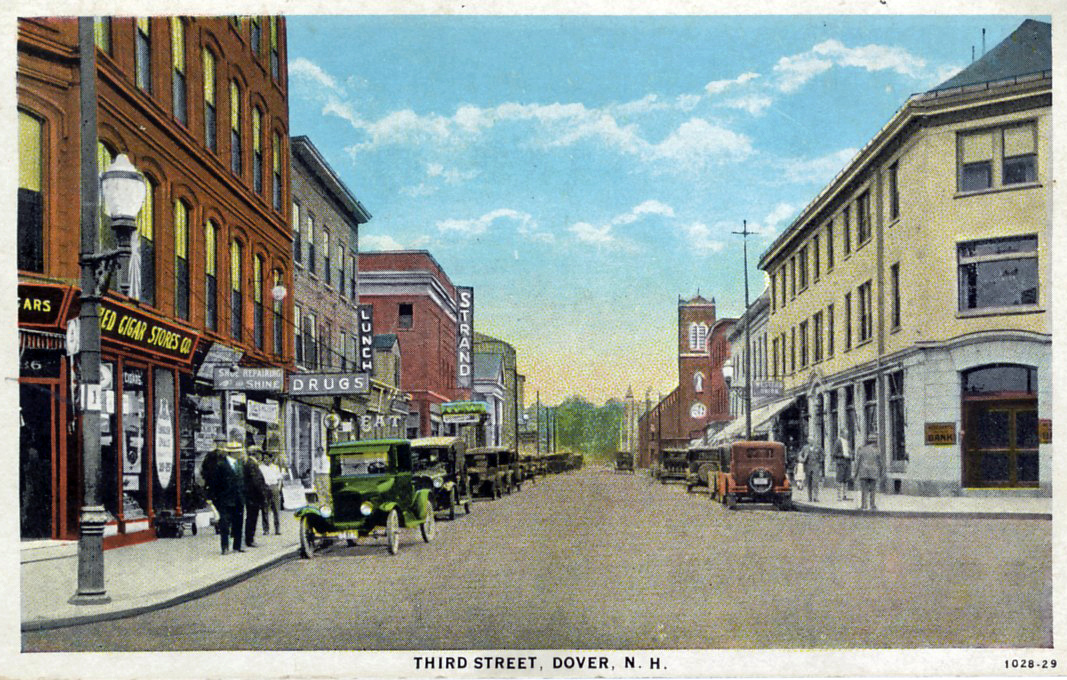
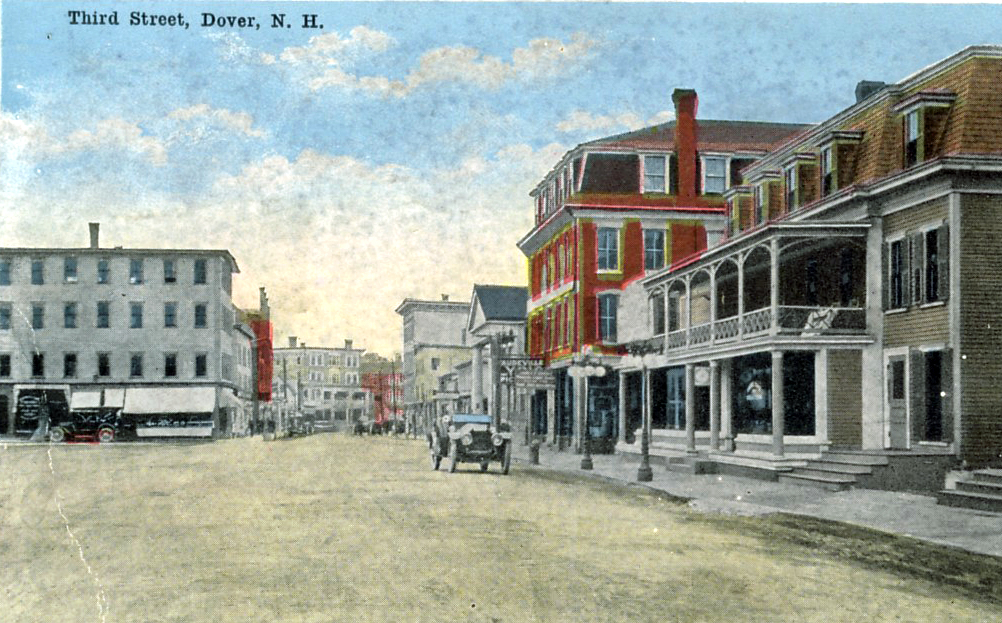 Looking down Third Street toward Franklin Square about 1920.
Looking down Third Street toward Franklin Square about 1920.
The Kimball Hotel is the first building on the right.
This street originally had only four houses, used as boarding houses by mill workers. The north side of the street was completely taken up by the Cocheco Manufacturing Company's woodyard from 1821-42. The yard, bordered by a high stockade fence, had its entrance on Central Street and ran all the way to Chestnut. The wood was kept covered under long sheds and Franklin Square would be crowded with teams of horses and their loads. The boss of the woodyard would make offers for the different loads ($2 - $4 per cord).
When the mills began using coal circa 1840, the need for wood diminished; when the B & M railroad came to Dover in 1842, the yard was closed to make room for tracks, stations, and trains.
The arrival of the railroad in Dover shaped the development of Third Street to a large extent. Most businesses were dependent on railroad clientele for their survival. Hotels, theaters, saloons, and restaurants lined the south side of the street over the years. In addition to the American House, the most prominent hotel on Franklin Square, there were at various times four or five hotels on Third Street. Near the Square were the Franklin House and the City Hotel. The U.S. Hotel was on the site of the Strand Theater for about 40 years before the theater was built circa 1920. The New Hampshire Hotel (circa 1892), Evans House (1898), the Anderson (1902), and the Lenox (1905) took turns on the site where Elias Anton had a furniture store (circa 1928-41) before Ross Furniture occupied the site. The Kimball Hotel lasted the longest, starting in 1870 and continuing until early 1982 when a fire demolished it along with the Asia Restaurant which has since been rebuilt.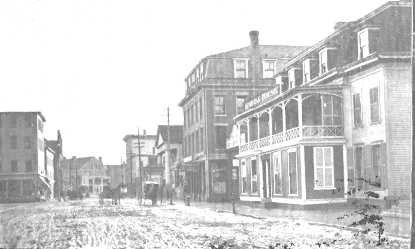 The first building on the right is the Kimball Hotel.
The first building on the right is the Kimball Hotel.
Between the New Hampshire and the Kimball was a building which started out as the Universalist Church in 1837. It continued until 1875, when it was sold to former mayor George Lowell who added a brick front and remodeled the interior. The Universalists built in 1882, the Peirce Memorial Church formerly on Central Avenue. Lowell's Crockery Shop occupied the site until the Lyric Theater took over from circa 1909 t and lasted until the 1930's.
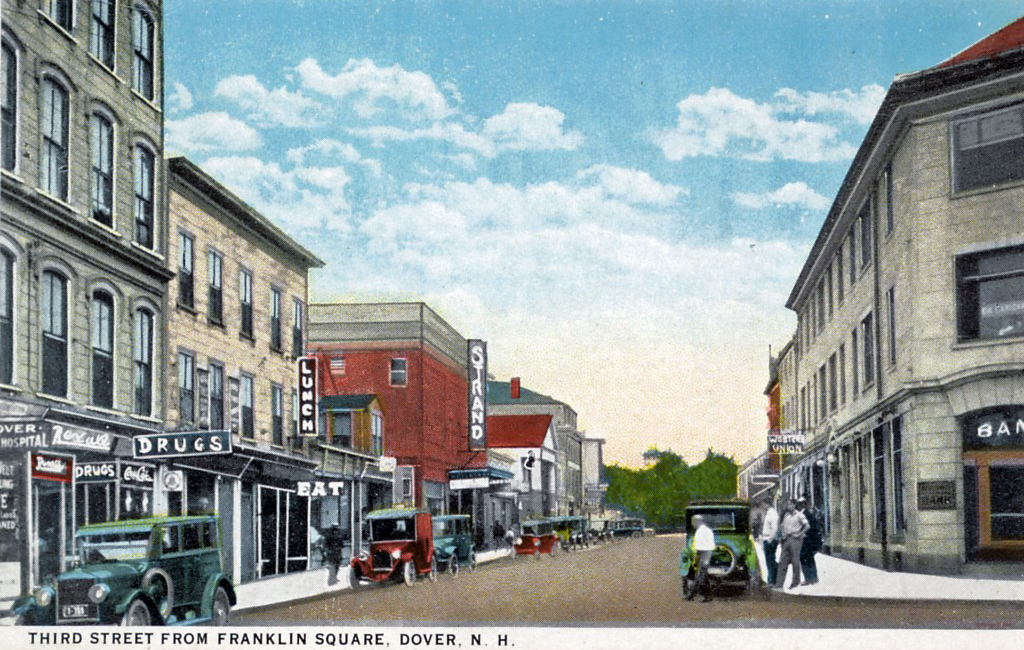
On the opposite corner, a large building was occupied by shoe manufacturers during the 1860's-1880's. Later, the J.M. Wilson Company, beef and provisions, were here and they had a wire running across Chestnut Street high above the traffic. Sides of beef that came in on the railroad were transferred to the building by pulling them across Chestnut Street on this wire.
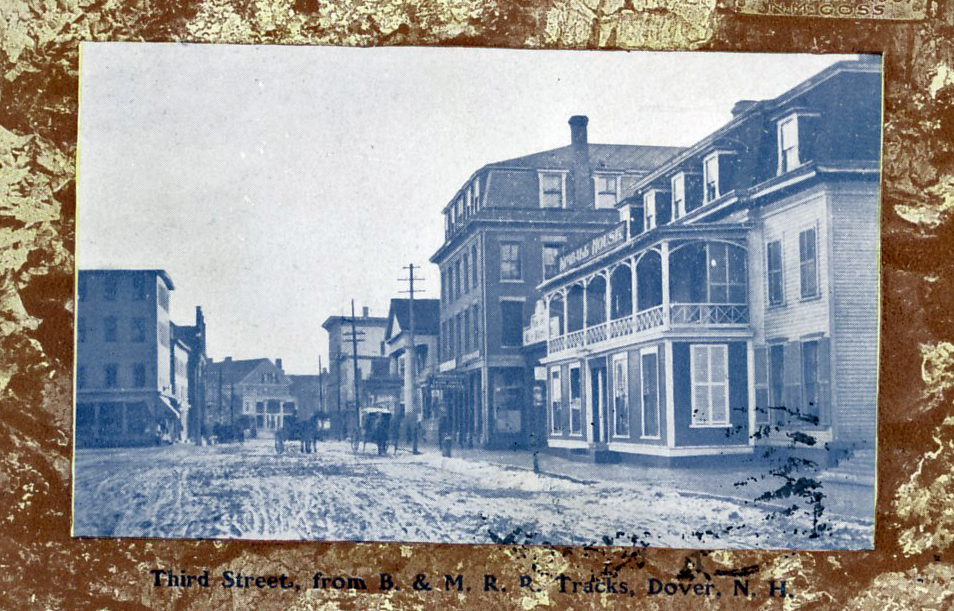
The railroad station was built in 1842 on the site where the municipal parking lot is now. Soon the railroad added a roundhouse and engine facilities near the Cocheco River and two branch lines: Cocheco Railroad to Alton Bay (1851), and the Portsmouth & Dover Railroad (1874). There were nine stations within Dover's boundaries and it moved the focus of Dover's business from the Landing, which was dependent on shipping, to the Third Street rail lines
In 1828, Dover became headquarters for the Portland division of the B&M. The two-story station was modified to three and new roundhouse (still existing) was built further east near Oak Street.
From the 1984 Heritage Walking Tour Booklet.
This historical essay is provided free to all readers as an educational service. It may not be reproduced on any website, list, bulletin board, or in print without the permission of the Dover Public Library. Links to the Dover Public Library homepage or a specific article's URL are permissible.
